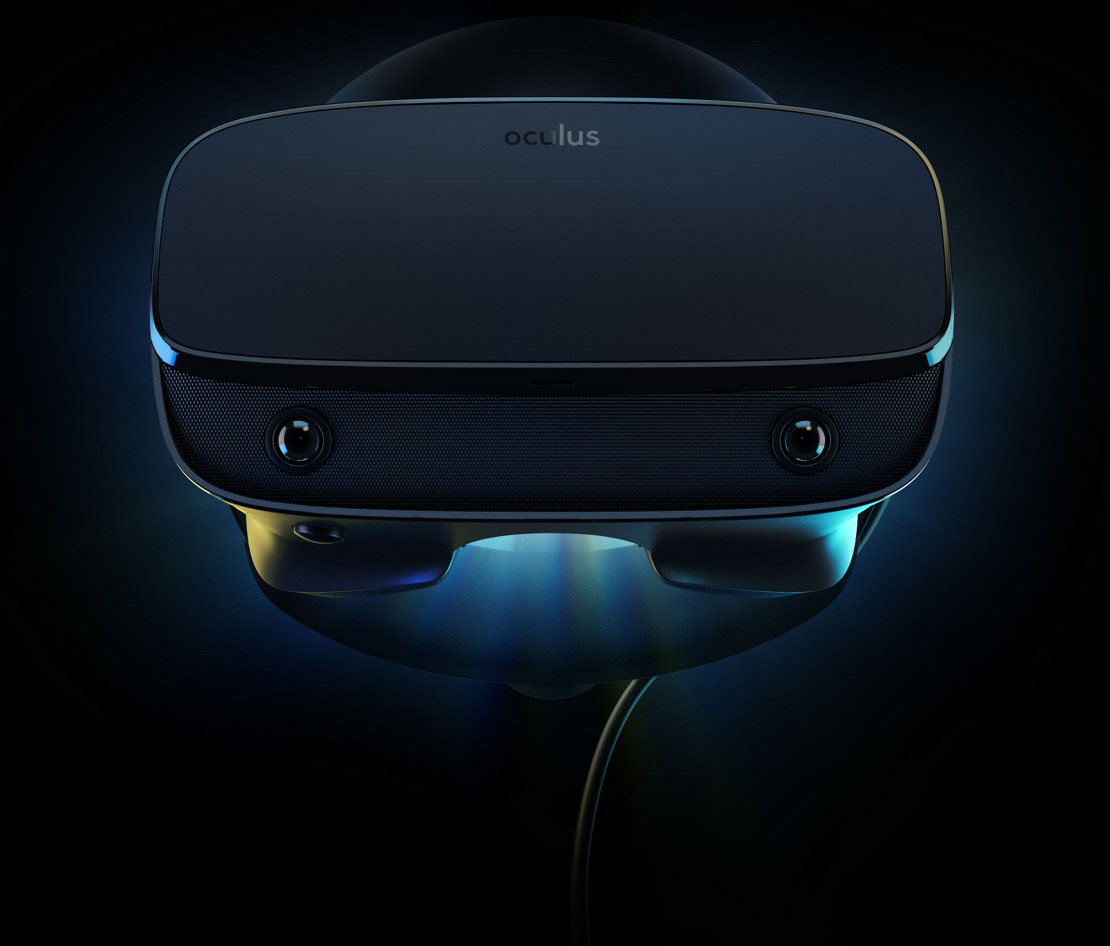At the GDC on March 18th, Oculus shared details and gave hands on experiences with the new Oculus Rift S. Oculus teamed up with Lenovo to create the hardware that brings this updated headset to the consumer market. Here’s what’s new…
Tech Specs:
- Single-panel fast-switching LCD with Higher Resolution: 2560×1440 (1280 x 1440 per eye)
- Lower refresh rate down to 80hz from previous headset’s 90hz.
- 5 camera inside-out tracking and Passthrough+
- Single-cable setup connects to a PC via DisplayPort and USB 3.0
- Halo style head-strap with built in headphones and 3.5mm jack
- Updated touch controllers: identical to Oculus Quest
- Priced at $399
- No official release date yet
Display: Single panel fast-switching LCD. Oculus switched from having two OLED screens and now uses a single LCD 1280 × 1440 per-eye (up from the CV1’s 1080 × 1200 per-eye). The panel’s refresh rate has been dropped to 80Hz compared to the Rift CV1’s 90Hz. This lower refresh rate is a slight tradeoff that should help current systems CPU’s and GPU’s to keep up with the higher resolution with barely noticeable difference. Another change is the switch to software-based interpupillary distance (IPD) adjustment.
Tracking and Passthrough+: The Oculus S’s new Inside-out tracking dubbed “Insight,” uses same technology as new Oculus Quest, but with an extra camera and improved distribution for better tracking. This eliminates the need for having two (or three) sensors with wires draping across your room. The new Passthrough+ feature lets you use the cameras to peek through for a black and white view of your physical surroundings in the dash. Passthrough+ also activates when you step outside of you Guardian boundaries (which can now be adjusted while wearing the headset).
One thing to note is that the switch to inside-out tracking may cause dead-zones where the view of the controllers is blocked by your body, or glitches when brought too close to the headset. This could be problematic for game mechanics that use wide range of movements like archery.
Touch Controllers: Using the same style as the portable standalone Oculus Quest, the rings of the Rift S controllers now goes over the hand (as opposed to the around/under hand ring on CV1), to provide improved tracking.

Cables: Coming in at a full meter longer than the original Rift CV1’s headset cable, the new 5m Single-cable setup connects to a PC via DisplayPort and USB 3.0. The lack of external sensors means you won’t be jockeying around a bunch of USB plugs for power distribution. This also eliminates the need for purchasing extra USB cards like the Inateck one that Oculus suggested customers buy to accommodate the original Rift.
Head-strap: the new Halo style head-strap boasts more comfort and adjustability. The strap contains built in headphones and 3.5mm jack. The new headphones are actually hidden inside the strap, as opposed to the exterior headphones which gave many people problems on the original Rift.

Despite the $399 price announcement, Oculus is still keeping the new hardware’s release date close to the chest. Facebook’s F8 developer conference at the end of April should tell us more, possibly even becoming the market release date.

Leave a Reply